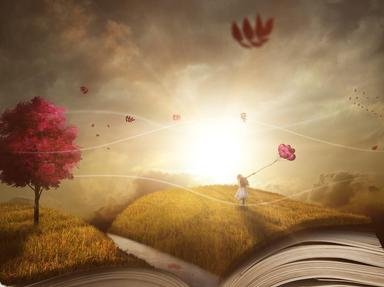Quiz Answer Key and Fun Facts
1. The oldest version of "Cinderella" is the ancient story called "Rhodopis". Rhodopis was a beautiful, rosy-cheeked, light-skinned, blonde-haired, green-eyed girl who became a slave to Egyptians. Although she didn't have stepsisters, the other servant girls teased her and were mean to her. Eventually, she married the Pharaoh, her version of Prince Charming. Where did Rhodopis live before she was kidnapped and brought to Egypt?
2. "Yè Xiàn" is an ancient Chinese version of "Cinderella". It can be found in the "Miscellaneous Morsels from Youyang" collection. Which of the following served as a friend to the main (Cinderella) character, Yè Xiàn? The spirit of her deceased mother sent this animal to her.
3. A Korean version of "Cinderella" is called "Kongji and Patzzi".
4. There is a "Cinderella" story in which a warrior could make himself invisible. His name was Strong Wind. He married a daughter of a chief who was abused by her sisters. What are the characters?
5. A "Cinderella" tale from Georgia (no, not the U.S. state, haha!) is called "Conkiajgharuna". It is the title of both the story and the main character herself, but what in the world does Conkiajgharuna mean?
6. In an Italian version of "Cinderella" by Giambattista Basile, Zezolla (the Cinderella character) actually had two stepmothers (but not at the same time). Sorry to be a little gross/morbid, but Zezolla's beloved governess, the woman who became her second stepmother, actually persuaded Zezolla to murder her first stepmother. After the governess married her father, was she a nice stepmother to Zezolla?
7. In "Rashin-Coatie", a Scottish variant of "Cinderella", there was a creature who helped the Cinderella character. Many might consider it to be a Fairy Godmother-like character, but what was it, literally?
8. In an Irish "Cinderella" called "Fair, Brown, and Trembling", what was the woman who helped Trembling (Cinderella character) primarily described as? What was she called?
9. In 1812, the Grimm Brothers' version of "Cinderella" was published. In 1857, another edition was released. Both are from the same people and German, obviously, but how is the 1857 version different than the 1812?
10. A French "Cinderella" was the 1697 fairytale by Charles Perrault. Which *isn't* true about his version?
Source: Author
Ceduh
This quiz was reviewed by FunTrivia editor
looney_tunes before going online.
Any errors found in FunTrivia content are routinely corrected through our feedback system.
